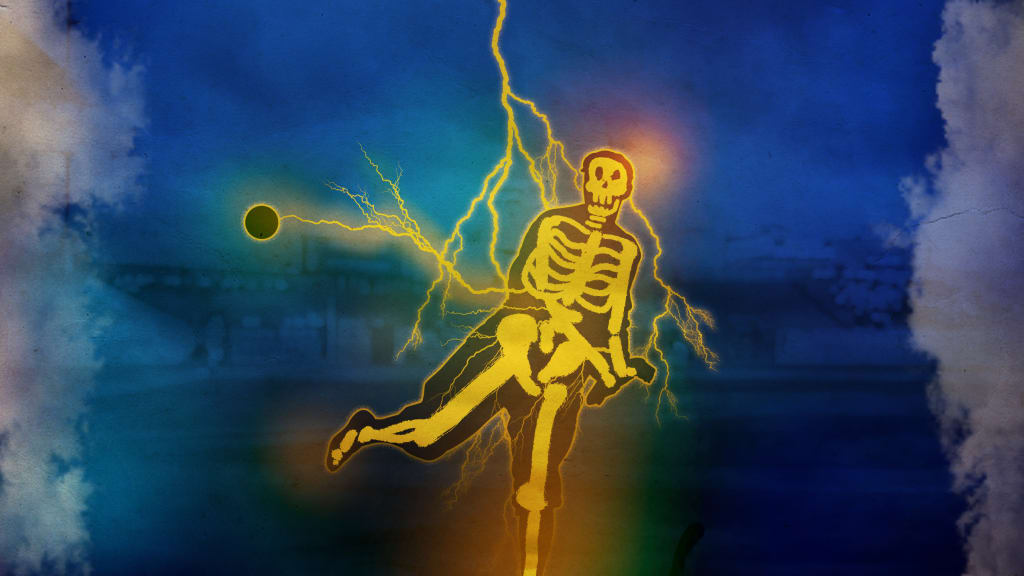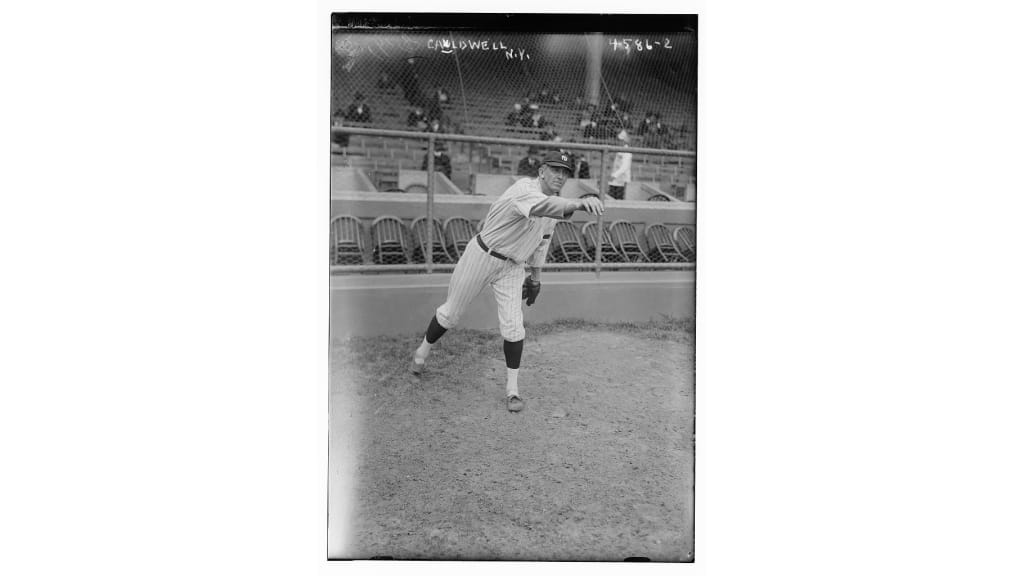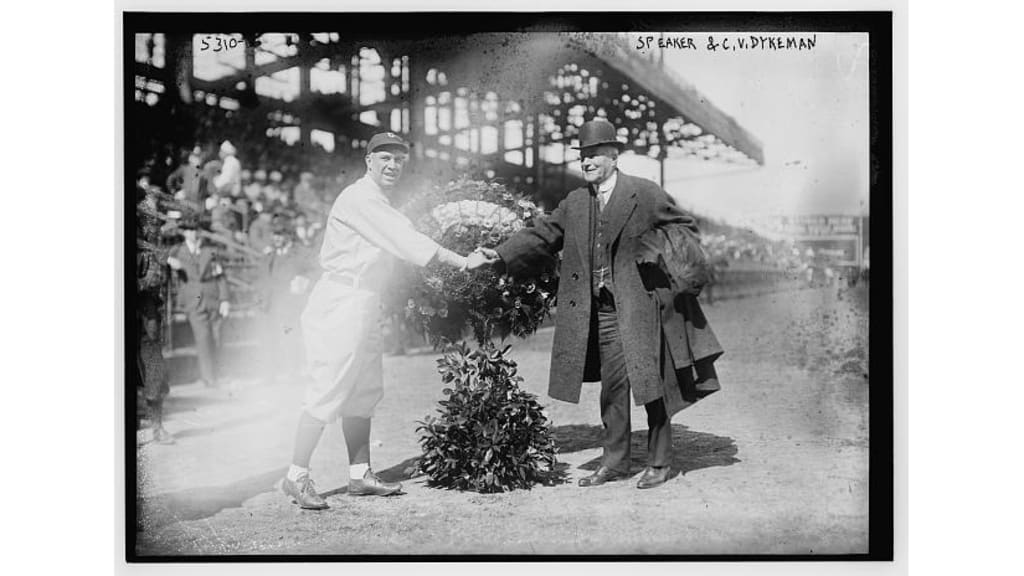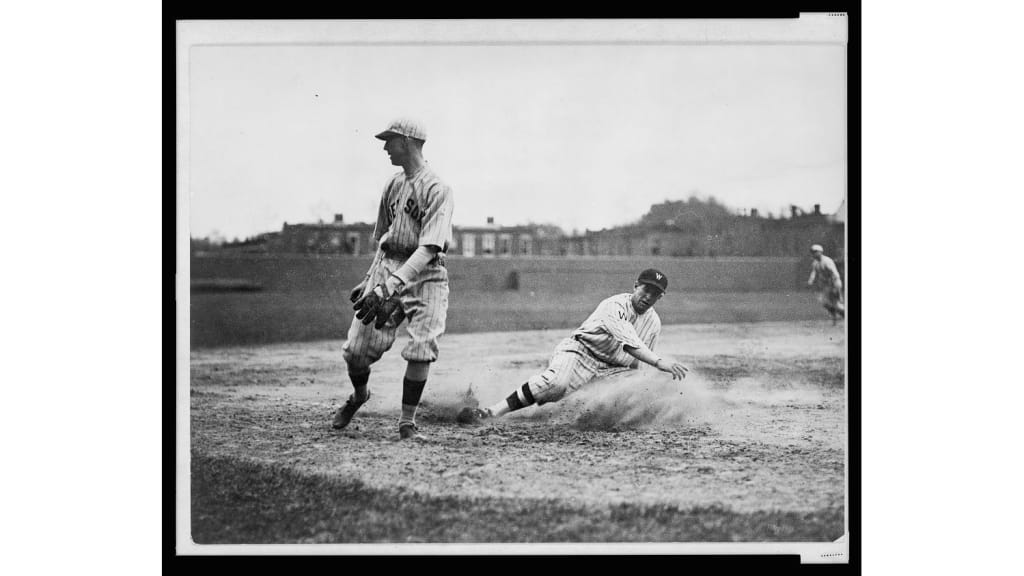
Over the years countless buzzkilling parents have likely told their children they're more likely to be struck by lightning than become Major Leaguers. Even more unlikely than getting struck by lightning or making the Majors, though? Getting struck by lightning while playing in a Major League game.
Against all odds, that's exactly what happened to Ray Caldwell on Aug. 24, 1919.
Caldwell was known as a talented pitcher who, due to a fondness for ... let's say "nightlife," never was able to put together sustained bouts of success. Nevertheless, if you caught him in a period of remorseful repentance he could really help a team's pitching staff.
Prior to the 1919 season, the Yankees traded the 31-year-old Caldwell to the Red Sox after he had left the team without notice during the 1918 season. (It wasn't the first time he'd disappeared, but the team must have decided he was no longer worth the trouble.) Boston manager Ed Barrow had a reputation for being tough, so there was some hope of engineering a change in Caldwell.

In Boston, however, he became road roommates with a 24-year-old pitcher and slugger named Babe Ruth who also enjoyed the occasional drink. The outcome was predictable: Caldwell quickly wore out his welcome in Boston and was released in early August.
After getting jettisoned by two teams in the span of nine months, Caldwell's future prospects in the game didn't look good. But, the Indians were chasing the White Sox for the American League pennant and were desperate for whatever pitching could be had -- and Caldwell could be had.
Cleveland manager Tris Speaker had an unusual plan to find a sustainable balance between work and play for Caldwell: After every game he pitched, he would be encouraged to get drunk and would not report to the clubhouse the next day. When he returned the second day following his start, he would run a bunch of laps around the park to get it out of his system. Then he would begin the process of preparing for his next start.
No one could say no to a deal like that, so Caldwell signed with the team on Aug. 19.

Five days later, Caldwell made his debut, taking the mound at Cleveland's League Park against the lowly Philadelphia Athletics.
Speaker's gamble was working out. Caldwell cruised through 8 2/3 innings, giving up only one run on four hits, and he stood on the mound in the top of the ninth inning about to seal a 2-1 win for his new team -- and get the game in before the forecasted summer evening thunderstorm rolled in. Light-hitting shortstop Joe Dugan stepped to the plate, representing the potential final out of the game.
What happened next is a matter of some dispute, but two things we know for sure: A bolt of lightning struck somewhere within the confines of League Park, and it knocked Caldwell out cold. Some reports say the lightning struck an iron rail near the press box and made its way down to the field and out to the mound.
Franklin Lewis, author of a history of the Indians, saw it differently. "A bolt came hurtling from the sky and smashed into the ground near the pitcher's mound," he wrote. "A direct hit would have killed any mortal. Caldwell was struck, a glancing blow fortunately. He was flattened and knocked unconscious for five minutes."
Caldwell had another theory: The bolt entered him through the metal button atop his cap. He said the experience felt like someone hit him on the head with a wooden board. After the game, he claimed to have discovered a burn mark on his chest, which he attributed to the lightning strike.
Others on the field received electric shocks as well. The strike knocked off catcher Steve O'Neill's mask and cap. Third base coach Harry Davis lost his hat. Umpire Billy Evans said he felt the tingle of electricity in his legs. Ray Chapman -- who would die after getting hit by a pitch a year later -- reported numbness in his legs that nearly caused him to fall while running to Caldwell from shortstop.
One of Caldwell's teammates claimed to have gotten a second shock from touching the pitcher on the head.

Whatever happened, exactly, it's clear that Caldwell got the brunt of it. As he "lay stretched out in the pitcher's box," according to The Sporting News, his own teammates feared he might be dead. But, after about five minutes of extremely justifiable panic, he came to.
Caldwell didn't come out of the game to recover from the shock or seek medical attention, though. No. He had business to attend to -- namely getting Dugan out and ending the game. And that's just what he did, quickly inducing a ground ball to third base.
Miraculously, Caldwell didn't suffer any lasting effects from this scary moment, aside from that alleged burn mark. If anything, his pitching record suggests the lightning strike might have been a boon for his career. Just over two weeks later, he threw a no-hitter against the Yankees -- his former team -- and, all told, he went 5-1 with a 1.71 ERA with Cleveland in 1919.
Although the chance Speaker and the Indians took on Caldwell worked out surprisingly well -- he ended up pitching two more seasons in Cleveland -- the team ultimately fell short of the American League pennant, finishing 3 1/2 games back of the ignominious 1919 White Sox.
